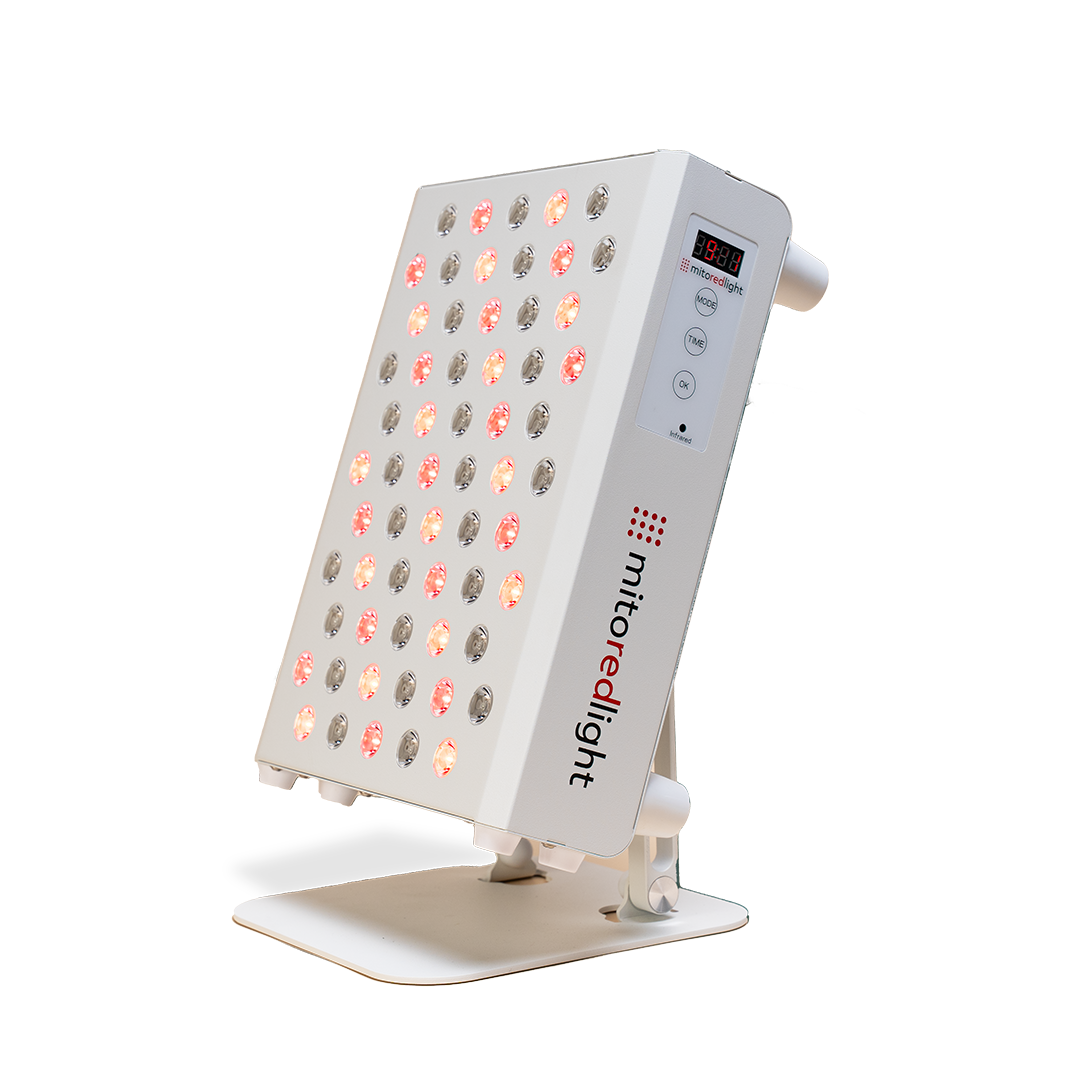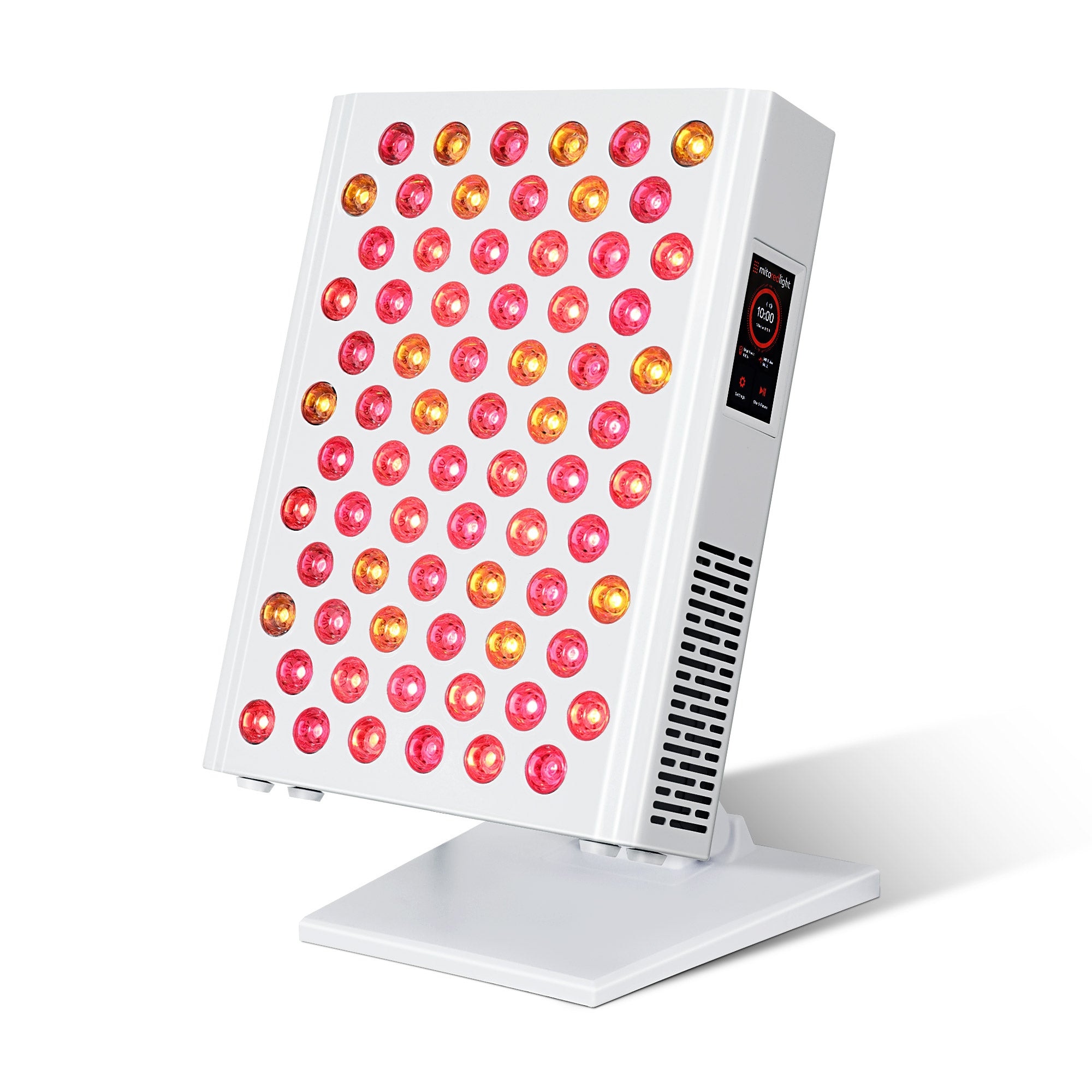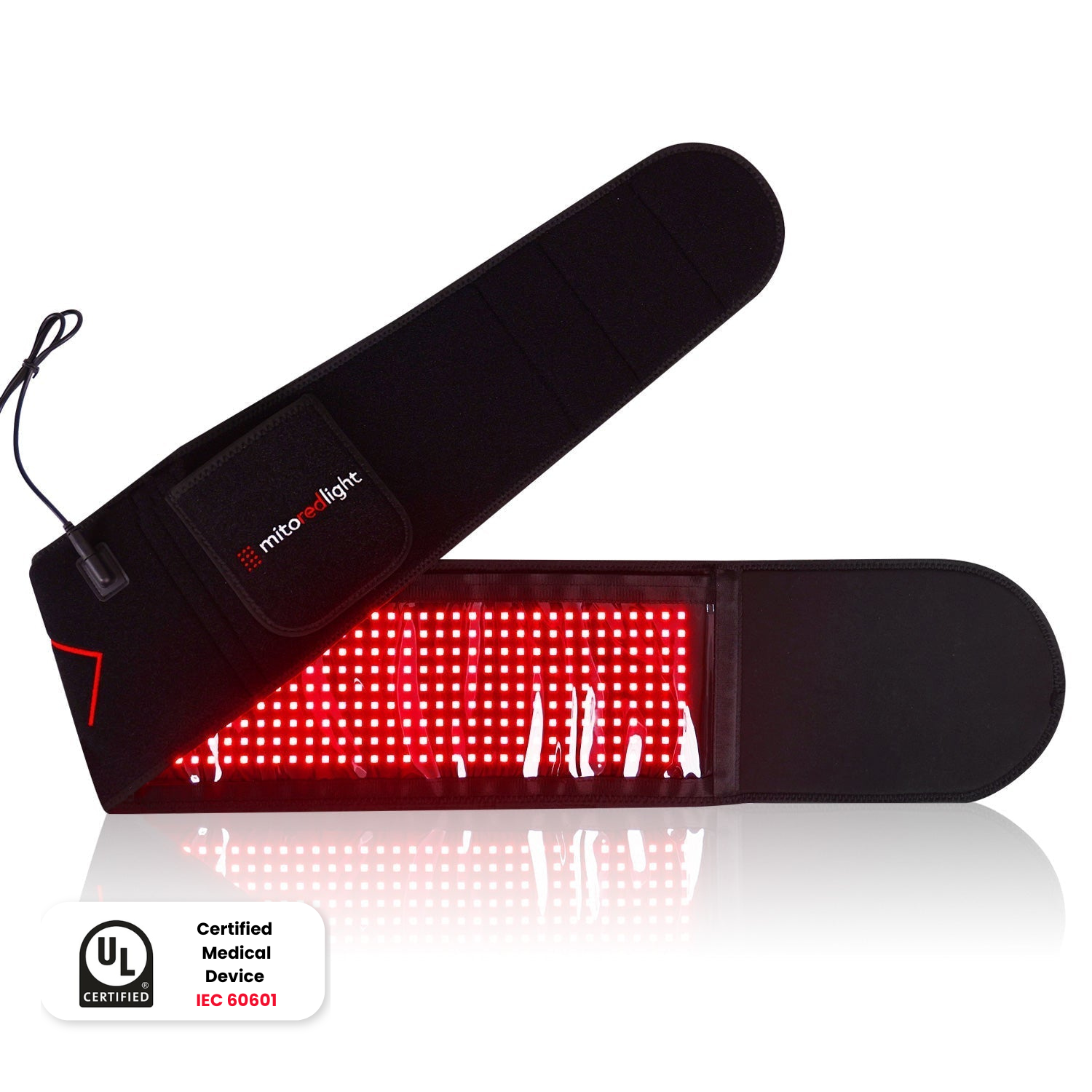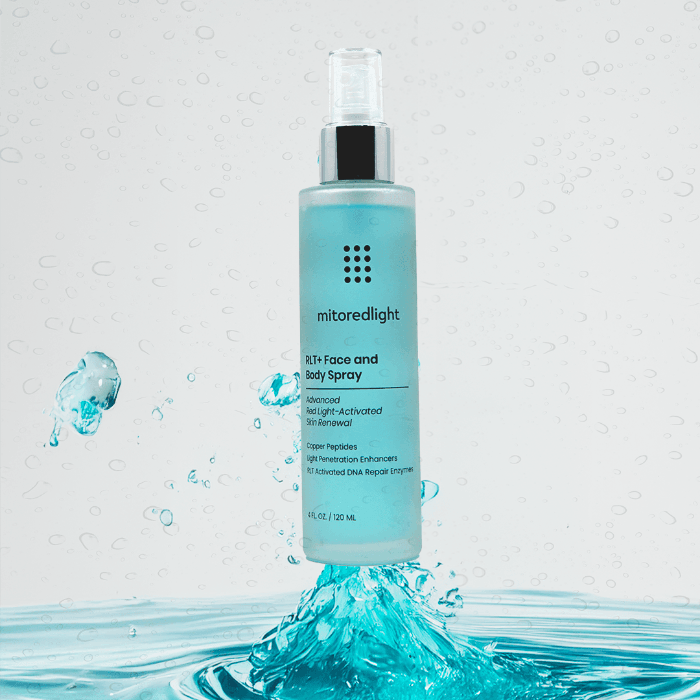Medically Reviewed By
Executive Summary
This Mito Red Light article explores the potential role of red light therapy (RLT) in supporting ADHD management, a neurodevelopmental disorder characterized by inattention and hyperactivity-impulsivity. RLT utilizes low-wavelength red light to stimulate cellular mitochondria, boosting ATP production and potentially enhancing cellular function. While ADHD is primarily managed with behavioral therapies and medication, RLT's potential to boost cellular energy and calm neural activity suggests it could offer complementary support. Emerging research indicates RLT might aid short-term working memory and regulate sleep, both relevant to ADHD. While generally safe, proper usage (duration, distance, eye protection) is crucial. Maximizing RLT benefits involves consistency, correct device use (like the MitoMIND™ Helmet for cognitive support), hydration, combining with healthy habits, personalized wavelengths (MitoADAPT 2.0), and tracking progress. Consulting healthcare professionals is advised. While not a standalone ADHD treatment, RLT shows promise as a supportive tool by potentially enhancing the body's natural processes.
Key Takeaways:
- Red light therapy may offer supportive benefits for ADHD symptoms.
- It works by stimulating cellular energy and potentially calming neural activity.
- Emerging research suggests benefits for memory and sleep, relevant to ADHD.
- Proper usage and consistency are key to maximizing RLT benefits.
- RLT is not a standalone treatment but a potential complementary approach.
Medically Reviewed by | Heidi Wright, BSN, RN, PCCN
At Mito Red Light, we're committed to exploring innovative ways to enhance well-being, beyond traditional methods. As interest in alternative therapies surges, one question we often encounter is whether red light therapy (RLT) has any role to play in ADHD management.
ADHD is a complex condition that affects millions worldwide, from children to adults. In this article, we'll dive into whether red light therapy — a non-pharmacological approach — might be a supportive option.
What is ADHD?
Attention-deficit/hyperactivity disorder (ADHD) is a neurodevelopmental disorder that manifests in varying degrees and forms across different individuals. It commonly appears in childhood and often continues into adulthood.
The symptoms of ADHD are categorized broadly into two types of behavioral problems:
- Inattention:
- Difficulty sustaining focus
- Poor organizational skills
- Tendency to make careless mistakes
- Easily distracted by unrelated thoughts or stimuli
- Forgetfulness in daily activities
- Hyperactivity and Impulsivity:
- Fidgeting or tapping hands or feet, or squirming in seat
- Inability to stay seated in situations where it is expected
- Feeling restless
- Inability to engage in leisure activities quietly
- Talking excessively
- Interrupting or intruding on others
While every individual with ADHD experiences the condition uniquely, leaving these symptoms unmanaged can lead to a variety of complications that extend beyond mere distraction or restlessness.
ADHD can significantly impact life, from academic performance and professional success to interpersonal relationships and self-esteem. As a result, finding effective management strategies becomes key for those affected.
What Is Red Light Therapy?
Red light therapy (RLT) is a cutting-edge approach that utilizes specific, low-wavelength red light to promote various health processes in the body.
This therapy isn't about creating heat or visible changes on the skin's surface, but about stimulating the deeper biological mechanisms that contribute to cellular health and regeneration.
How Does Red Light Therapy Work?
The magic of red light therapy lies in its ability to penetrate the skin and target the mitochondria, the energy powerhouses of our cells.
When the wavelengths of red to near-infrared light emitted by RLT devices reach these mitochondria, they trigger a biochemical effect that increases the efficiency of the ATP (adenosine triphosphate) production process. ATP is the primary energy carrier in all living cells, and boosting its production can enhance cellular performance and longevity.
This process doesn’t alter your cells in any invasive way — rather, it supports their natural functions. The light stimulates the mitochondria, prompting them to maintain efficiency, which in turn can help the cells repair and rejuvenate effectively.
Why Should You Care About Red Light Therapy?
Now that you know the basics of red light therapy, you might be wondering why it's worth adding to your wellness routine. When it comes down to it, most of us spend much of our time indoors these days — which means we’re missing out on key wavelengths of light. Red light therapy can help with this.
With this in mind, let’s take a look at some of the potential benefits that this innovative therapy brings to the table:
May Support Physical Performance and Muscle Recovery
Every athlete, whether amateur or professional, knows this fundamental truth: recovery is key. Red light therapy might just be the helping hand your muscles need after a rigorous workout session.
Studies show that red light therapy might support recovery and enhance your physical performance by soothing feelings of muscle tension and soreness.
May Support Skin Health and Rejuvenation
If you've ever dreamed of having a radiant, youthful glow, red light therapy might make these dreams a reality.
Yes, RLT can be your skin's best friend, supporting skin health by aiding in collagen production — which is like a youth serum for your skin. This can result in improved skin elasticity, reduced appearance of wrinkles, and an overall healthier complexion.
May Support Healthy Tissue Repair
Several scientific studies have demonstrated how RLT may support healthy wound healing and tissue repair. Whether it's a scrape, a sprain, or a post-workout muscle strain, incorporating red light therapy just might be what’s needed to get back to your best self.
May Support Healthy Hair Growth
Concerned about hair loss? Red light therapy might be your answer. FDA-cleared helmets using RLT technology are thought to support hair growth. Thanks to RLT, fuller, healthier-looking hair could be within reach.
Can Red Light Therapy Help With ADHD?
The connection might not be immediately obvious, since ADHD typically calls to mind behavioral therapies or medication. However, the underlying issues of ADHD — like problems with executive function and emotional regulation — might be areas where RLT could offer some holistic support.
ADHD is deeply rooted in neural functioning. By boosting cellular energy and potentially calming neural activity, red light therapy could offer a supportive role.
This approach doesn't replace traditional ADHD treatments, but could be considered a complementary strategy to help soothe the nervous system and support overall mental clarity.
What Does Science Say?
When we talk about red light therapy (RLT) and ADHD, you might wonder, "Where's the proof?"
Well, research in this area is emerging, but there are a few key studies that start to connect the dots.
“A promising 2022 study suggests that laser light therapy may hold the key to supporting short-term working memory in young adults,” notes Heidi Wright, Registered Nurse. Wright notes that these findings offer exciting possibilities for treating conditions that affect working memory, such as ADHD. However, while the results are encouraging, further research is crucial.
Another interesting piece of research looked at how RLT could influence sleep patterns. Since good sleep is important for managing ADHD symptoms, the fact that RLT has been shown to help regulate sleep could be a big deal for those with the disorder. This isn’t just theoretical — these findings come from clinical trials that observed real improvements in sleep quality, which in turn supports better daily functioning.
So, while we're not saying RLT is a standalone solution for ADHD, the science is starting to show that it might play a supportive role as part of a larger management plan.
Are There Any Side Effects?
When it comes to trying out something new like red light therapy (RLT), it’s smart to ask about side effects. Most users experience RLT as a gentle and safe way to support their body’s natural functions.
However, it’s all about using the technology correctly. Overuse or incorrect application can lead to minor issues like temporary eye strain if you're not wearing proper eye protection, or skin irritation if the light is too intense or used too frequently. That’s why following guidelines for duration and frequency is key.
It’s non-invasive, doesn’t involve any harsh chemicals, and doesn’t require downtime. That’s a big plus if you’re looking for a therapy that fits easily into your lifestyle without having to worry about major side effects.
How To Maximize the Benefits of Red Light Therapy
Jumping into red light therapy? Here are some top tips to get the most out of your sessions, whether you're looking to boost your mood, enhance your cognitive functions, or just give your overall health a nice lift.
Consistency Is Key
Like any good routine, consistency with red light therapy can make all the difference. Aim for regular sessions. Depending on your device and goals, this could mean daily or a few times a week.
Focus on Duration and Distance
Follow the manufacturer’s instructions for how long each session should last and how far you should be from the device. Too close and you might not cover the area effectively; too far and the light might be too diffuse.
Protect Your Eyes
Always use proper eye protection if your device doesn’t already shield your eyes. Direct exposure to intense light can be tough on your eyes, even if it’s not UV.
Stay Hydrated
It’s a simple tip, but hydration is crucial when you’re boosting your cells with red light therapy. Drink plenty of water to help support the body’s natural processes that the therapy enhances.
Combine With Other Healthy Habits
Red light therapy goes hand in hand with a healthy lifestyle. Combine it with balanced nutrition, regular exercise, and good sleep habits to maximize your results.
Personalize Your Practice
With devices like our MitoADAPT 2.0 Series, you can customize the wavelengths for a truly personalized session. Experiment to find what combination of red and NIR light works best for you.
Track Your Progress
Keep a journal of your red light therapy sessions and any changes you notice. This can help you tweak your routine and keep motivated.
Use the Right Gear for Specific Needs
If you're looking to enhance brain function and mental clarity, our MitoMIND™ Helmet is your go-to gadget. It's designed to support holistic cognitive health through transcranial photobiomodulation.
Consult with Professionals
If you’re unsure about starting red light therapy, especially if you have specific health conditions, talk to a healthcare provider to ensure it’s a good fit for your health profile.
The Final Word
At Mito Red Light, we're all about pushing the boundaries of traditional wellness methods. While red light therapy shows some promise in supporting ADHD management, it's clear that more research is needed to fully understand its benefits.
Modern humans often lack sufficient exposure to red and NIR light, essential for optimal health. If you're thinking about reintegrating these vital wavelengths back into your daily routine, Mito Red offers innovative solutions tailored to enhance your well-being.
Remember, while red light therapy can be a supportive addition to your health regimen, it's not a cure-all. It's about supplementing your body's natural healing processes, potentially making a significant difference in managing symptoms and improving quality of life. Interested in exploring what red light therapy can do for you? Mito Red is here to light the way.
Click to learn more about potential red light therapy benefits.
Find Commercial Mito Red Light Therapy Near Me
Related Articles:
How To Prep Your Skin Before Red Light Therapy
Everything You Need to Know About Red Light Therapy and SKIN
Red Light Therapy Masks vs. Panels
Red Light Therapy Benefits Overview
Sources:
What is ADHD? | Psychiatry.org
Untreated Adult ADHD: Why a Diagnosis Is Life-Changing | ADDA
Red Light Therapy: Benefits, Side Effects & Uses | Cleveland Clinic
Not just the powerhouse of a cell | Colorado Arts and Sciences Magazine

























